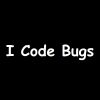题目:
设计一个支持在平均 时间复杂度 O(1) 下,执行以下操作的数据结构。
insert(val):当元素 val 不存在时,向集合中插入该项。remove(val):元素 val 存在时,从集合中移除该项。getRandom:随机返回现有集合中的一项。每个元素应该有相同的概率被返回。
Design a data structure that supports all following operations in average O(1) time.
insert(val): Inserts an item val to the set if not already present.remove(val): Removes an item val from the set if present.getRandom: Returns a random element from current set of elements. Each element must have the same probability of being returned.
示例 :
// 初始化一个空的集合。
RandomizedSet randomSet = new RandomizedSet();
// 向集合中插入 1 。返回 true 表示 1 被成功地插入。
randomSet.insert(1);
// 返回 false ,表示集合中不存在 2 。
randomSet.remove(2);
// 向集合中插入 2 。返回 true 。集合现在包含 [1,2] 。
randomSet.insert(2);
// getRandom 应随机返回 1 或 2 。
randomSet.getRandom();
// 从集合中移除 1 ,返回 true 。集合现在包含 [2] 。
randomSet.remove(1);
// 2 已在集合中,所以返回 false 。
randomSet.insert(2);
// 由于 2 是集合中唯一的数字,getRandom 总是返回 2 。
randomSet.getRandom();
解题思路:
-
要求时间复杂度 O(1) 插入删除操作: 可以从零开始设计一个哈希算法, 也可以借助高级程序语言中已设计好的哈希集合/映射
-
要求相同概率随随机返回元素: 哈希集合无法做到随机返回一个元素, 可以再借助一个顺序存储如数组, 随机产生索引下标, 返回对应元素值
那么就需要用哈希映射存储元素, key 为元素值, value 为元素存储在辅助数组中的索引下标值
插入操作就是数组, 哈希映射的插入操作
难点在于删除操作, 首先删除哈希映射中的该键值对, 其次删除数组中的该元素值, 不能简单的通过赋一个不可能出现的数值伪删除, 因为这种伪删除会导致数组越来越大撑爆内存。
代码:
Java:
class RandomizedSet {
List<Integer> list;
Map<Integer, Integer> map;
Random rand;
/** Initialize your data structure here. */
public RandomizedSet() {
list = new ArrayList();
map = new HashMap();
rand = new Random();
}
/**
* Inserts a value to the set. Returns true if the set did not already contain the specified element.
* 常规插入操作
*/
public boolean insert(int val) {
if (map.containsKey(val))
return false;
map.put(val, list.size()); // value 表示存储在 list 中的索引下标
list.add(val); // 添加在数组 list 尾部
return true;
}
/**
* Removes a value from the set. Returns true if the set contained the specified element.
*
*/
public boolean remove(int val) {
if (!map.containsKey(val)) // 如果哈希映射中不存在该键 直接返回 False
return false;
int tmp = list.get(list.size() - 1); // 暂存数组最后一位元素值
int index = map.get(val); // 获取待删除元素在 list 数组中对应的索引下标 index
list.set(index, tmp); // 将 list 中该元素值改为暂存的数组最后一位值
map.put(tmp, index); // 更新哈希映射中代表数组最后一位的键值对 对应的索引下标为 index
list.remove(list.size() - 1); // 删除数组最后一位
map.remove(val); // 删除哈希映射中该键值对
return true;
}
/** Get a random element from the set. */
public int getRandom() {
return list.get(rand.nextInt(list.size())); // 产生一个大小为 [0, 数组大小) 的随机索引下标
}
}
Python:
from random import choice
class RandomizedSet:
def __init__(self):
"""
Initialize your data structure here.
"""
self.val_map = dict()
self.val_list = list()
def insert(self, val: int) -> bool:
"""
Inserts a value to the set. Returns true if the set did not already contain the specified element.
"""
if val not in self.val_map:
self.val_map[val] = len(self.val_list) # value 表示存储在 val_list 中的索引下标
self.val_list.append(val) # 添加在数组 val_list 尾部
return True
return False
def remove(self, val: int) -> bool:
"""
Removes a value from the set. Returns true if the set contained the specified element.
"""
if val in self.val_map:
index = self.val_map[val] # 获取待删除元素在 list 数组中对应的索引下标 index
last_val = self.val_list[-1] # 暂存数组最后一位元素值
self.val_list[index] = last_val # 将 list 中该元素值改为暂存的数组最后一位值
self.val_map[last_val] = index # 更新哈希映射中代表数组最后一位的键值对 对应的索引下标为 index
self.val_map.pop(val) # 删除哈希映射中该键值对
self.val_list.pop() # 删除数组最后一位
return True
return False
def getRandom(self) -> int:
"""
Get a random element from the set.
"""
return choice(self.val_list) # 返回数组中的随机一个元素
点击查看更多内容
1人点赞
0 评论
共同学习,写下你的评论
暂无评论
作者其他优质文章
正在加载中
感谢您的支持,我会继续努力的~
扫码打赏,你说多少就多少
赞赏金额会直接到老师账户
支付方式
打开微信扫一扫,即可进行扫码打赏哦




